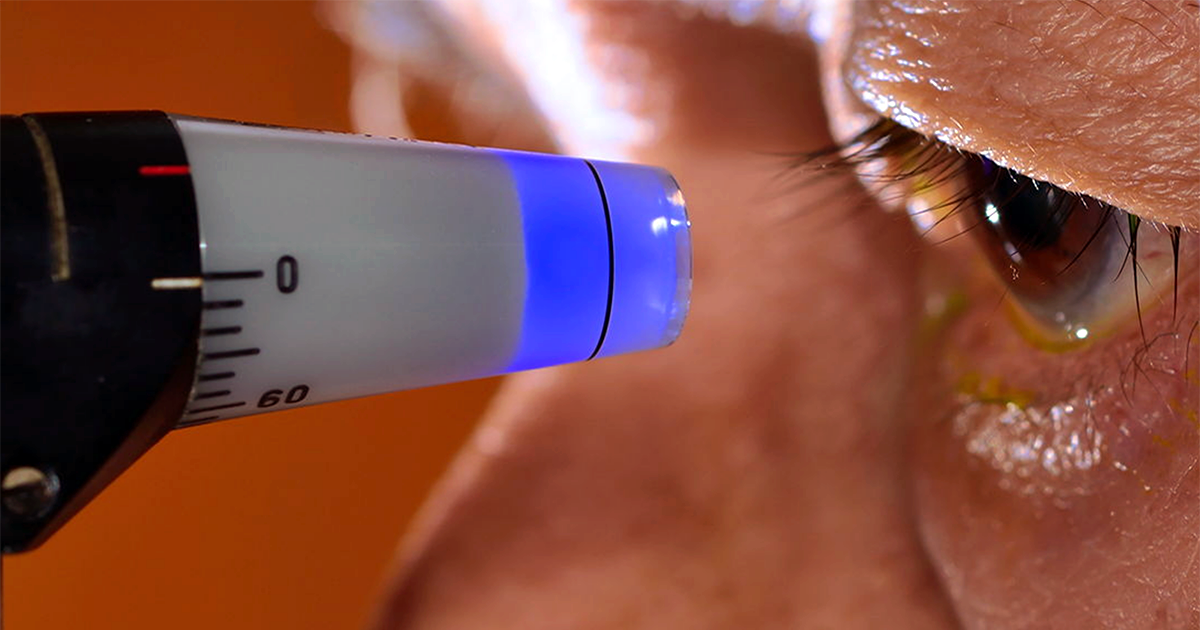Age can lead to a decline in eye health. In fact, many eye complications occur after the age of 60. But with regular eye exams, you can spot any issues early.
To understand age-related vision loss, you need to know about the structure of the eye. The eye is similar to a video camera. As light enters the eye, it travels through four main structures:
Cornea
First, light enters through the cornea. This is the transparent tissue in the front of the eye. In order to maintain a clear image, the cornea must be smooth and intact. A thin layer of tears coats the surface of the cornea to protect it.
Age-related complications: The smooth surface of the cornea can be damaged with age-related conditions such as blepharitis, an inflammation of the eyelids.
Lens
Next, the light moves through the lens, which focuses it finely on the third structure of the eye: the retina.
Age-related complications: The lens is also subject to age-related complications. In fact, almost everyone will be affected by either cataracts or presbyopia. At birth, the lens is clear and pliable, but as we age, the lens becomes clouded and less pliable.
Retina
The retina is like the film in a camera. Light is converted into a neural signal that is ultimately interpreted by the brain as an image.
Age-related complications: Many studies have indicated there is no significant age-related deterioration to the retina; however, there are age-related diseases that affect it, such as macular degeneration.
Optic Nerve
Finally, the optic nerve carries these signals to the brain.
Age-related complications: Similar to the retina, studies revealed there are no significant age-related complications to the optic nerve; however, there are age-related diseases such as glaucoma. Glaucoma is common for individuals over 80 years old.
These four main structures are crucial to the functioning of the eye, and as we age, they experience normal wear and tear of use.
Age-Related VisionProblems and Disorders
Some problems are more common with age, such as:
Cataracts
A cataract is when the lens of your eye forms a cloudy area. Cataracts are common in individuals over 80. In fact, half of all Americans 80 and older have cataracts or have had surgery for cataracts.
You may notice your cataract when looking at your eye. Over time, cataracts can make your vision blurry, less colorful or hazy, and it could interfere with your daily activities.
Glaucoma
Glaucoma occurs when the optic nerve is damaged. The damage is commonly caused by high pressure in your eye. For individuals over the age of 60, glaucoma is the leading cause of blindness.
The effects of glaucoma are gradual and happen over time. There are often no warning signs, and you may not notice changes until the condition is in an advanced stage.
Corneal Diseases
Corneal diseases and conditions can cause redness, watery eyes, pain, problems with vision or a halo effect of the vision. Infection and injury can cause some of these issues.
Dry Eye
Dry eye may feel like stinging or burning in the eye. It happens when tear glands don’t work well as they should.
Presbyopia
Presbyopia is a normal process that happens slowly over a lifetime. It is the loss of ability to see close objects or small print.
Retinal Disorders
Retinal disorders are anything that disrupts the transfer of images to the retina. These disorders are a leading cause of blindness in the United States and in other developed countries.
There are other age-related disorders, but these are the most common. Even if you don’t suffer from age-related conditions, there are simple ways to keep your eyes in good shape.
Maintaining Your Eye Health
Many of the eye disorders or problems associated with aging can be managed if detected early. Regular eye exams are important for your eye health as you age. Here are some additional tips for maintaining your eye health:
- Wear sunglasses that block ultraviolet radiation when you are outside.
- Don’t smoke.
- Eat healthily.
- Be physically active, and maintain a healthy weight.
- Maintain normal blood pressure.
- Control diabetes (if you have it).
- If you spend a lot of time at the computer, then look away every 20 minutes to prevent eye strain.
No matter your eye health history, regular eye exams are recommended over 60. Contact VisionQuest Eyecare to schedule an appointment.

